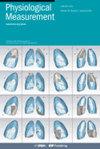A lightweight deep learning approach for detecting electrocardiographic lead misplacement.
IF 2.3
4区 医学
Q3 BIOPHYSICS
引用次数: 0
Abstract
OBJECTIVE Electrocardiographic (ECG) lead misplacement can result in distorted waveforms and amplitudes, significantly impacting accurate interpretation. Although lead misplacement is a relatively low-probability event, with an incidence ranging from 0.4% to 4%, the large number of ECG records in clinical practice necessitates the development of an effective detection method. This paper aimed to address this gap by presenting a novel lead misplacement detection method based on deep learning models. APPROACH We developed two novel lightweight deep learning model for limb and chest lead misplacement detection, respectively. For limb lead misplacement detection, two limb leads and V6 were used as inputs, while for chest lead misplacement detection, six chest leads were used as inputs. Our models were trained and validated using the Chapman database, with an 8:2 train-validation split, and evaluated on the PTB-XL, PTB, and LUDB databases. Additionally, we examined the model interpretability on the LUDB databases. Limb lead misplacement simulations were performed using mathematical transformations, while chest lead misplacement scenarios were simulated by interchanging pairs of leads. The detection performance was assessed using metrics such as accuracy, precision, sensitivity, specificity, and Macro F1-score. MAIN RESULTS Our experiments simulated three scenarios of limb lead misplacement and nine scenarios of chest lead misplacement. The proposed two models achieved Macro F1-scores ranging from 93.42% to 99.61% on two heterogeneous test sets, demonstrating their effectiveness in accurately detecting lead misplacement across various arrhythmias. SIGNIFICANCE The significance of this study lies in providing a reliable open-source algorithm for lead misplacement detection in ECG recordings. The source code is available at https://github.com/wjcai/ECG_lead_check.检测心电图导联错位的轻量级深度学习方法。
目的心电图(ECG)导联错位会导致波形和振幅失真,严重影响准确判读。虽然导联错位是一种相对低概率的事件,发生率在 0.4% 到 4% 之间,但临床实践中大量的心电图记录要求开发一种有效的检测方法。本文旨在通过提出一种基于深度学习模型的新型导联错位检测方法来填补这一空白。方法我们开发了两种新型轻量级深度学习模型,分别用于肢体和胸部导联错位检测。在肢体导联错位检测中,使用两个肢体导联和 V6 作为输入,而在胸部导联错位检测中,使用六个胸部导联作为输入。我们使用查普曼数据库对模型进行了训练和验证,训练和验证比例为 8:2,并在 PTB-XL、PTB 和 LUDB 数据库上进行了评估。此外,我们还检查了 LUDB 数据库中模型的可解释性。肢体导联错位模拟是通过数学变换进行的,而胸部导联错位情况则是通过交换导联对进行模拟的。主要结果我们的实验模拟了三种肢体导联错位情况和九种胸部导联错位情况。提出的两个模型在两个异构测试集上取得了从 93.42% 到 99.61% 不等的宏观 F1 分数,证明了它们在准确检测各种心律失常的导联错位方面的有效性。源代码见 https://github.com/wjcai/ECG_lead_check。
本文章由计算机程序翻译,如有差异,请以英文原文为准。
求助全文
约1分钟内获得全文
求助全文
来源期刊

Physiological measurement
生物-工程:生物医学
CiteScore
5.50
自引率
9.40%
发文量
124
审稿时长
3 months
期刊介绍:
Physiological Measurement publishes papers about the quantitative assessment and visualization of physiological function in clinical research and practice, with an emphasis on the development of new methods of measurement and their validation.
Papers are published on topics including:
applied physiology in illness and health
electrical bioimpedance, optical and acoustic measurement techniques
advanced methods of time series and other data analysis
biomedical and clinical engineering
in-patient and ambulatory monitoring
point-of-care technologies
novel clinical measurements of cardiovascular, neurological, and musculoskeletal systems.
measurements in molecular, cellular and organ physiology and electrophysiology
physiological modeling and simulation
novel biomedical sensors, instruments, devices and systems
measurement standards and guidelines.
 求助内容:
求助内容: 应助结果提醒方式:
应助结果提醒方式:


